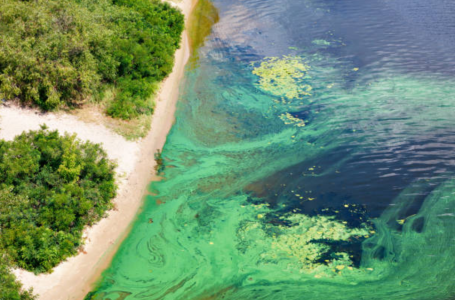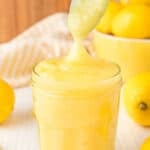Toxic Algae Kills 200 Species—including Sharks and Octopuses—off South Australia
By
Gian T
- Replies 0
If you’ve strolled along South Australia’s beautiful beaches lately, you may have noticed something deeply troubling: an unusual number of dead fish, octopuses, and even sharks washed up on the sand. Sadly, this isn’t just a one-off event or a case of bad luck—it’s the result of a massive toxic algal bloom that’s been devastating our coastline since March, and it’s being described by experts as nothing short of a 'horror movie' for marine life.
**What’s Happening in Our Waters?**
More than 200 different marine species have been killed by this outbreak, including some of our most iconic and beloved creatures. Deepwater sharks, leafy sea dragons, octopuses, and countless fish have all fallen victim. According to OzFish, a group dedicated to restoring waterways and fish habitats, nearly half of the dead species are ray-finned fish, while a quarter are sharks and rays. Cephalopods—like squid, cuttlefish, and octopuses—make up 7 per cent, and decapods (crabs, lobsters, and prawns) account for another 6 per cent.
The culprit? A harmful bloom of *Karenia mikimotoi*, a type of toxic algae that’s been described as a 'toxic blanket' smothering marine life. Brad Martin, OzFish’s South Australian project manager, explained that this algae can suffocate fish by clogging their gills, attack their red blood cells, causing haemorrhaging, and even act as a neurotoxin, affecting the nervous system and brain. 'This is why some fish and sharks are acting so strangely and why many of the dead have a red tinge—it is like a horror movie for fish,' he said.
**Why Is This Happening Now?**
The state’s environment department has pointed to a combination of factors driving this disaster. An ongoing marine heatwave has pushed water temperatures up by 2.5°C above normal, and calm conditions with little wind or swell have allowed the algae to thrive and spread. The bloom was first spotted in mid-March on the Fleurieu Peninsula and has since expanded to the south-east, Gulf St Vincent, Yorke Peninsula, and even Kangaroo Island.
While the algae isn’t considered toxic to humans, it can cause skin irritation and respiratory symptoms if you come into contact with affected water. For marine life, however, the consequences are far more severe—mass deaths across all ages, from baby fish to full-grown breeders and even the creatures they feed on.
**The Impact on Local Communities and Industries**
The effects of this algal bloom aren’t just environmental—they’re economic, too. Several oyster farms and commercial pipi harvesting operations have been temporarily shut down, a blow to local businesses and workers who rely on healthy oceans for their livelihoods. South Australia’s environment minister, Susan Close, called the event 'unprecedented' for the state, with some parts of the outbreak reaching depths of 20 metres.
Events like this can have long-term consequences for fisheries and the broader marine ecosystem. When so many species are wiped out at once, it disrupts the delicate balance of the food web and can take years for populations to recover—if they ever do.
**What Makes This Algae So Dangerous?**
Professor Shauna Murray, a marine biologist from the University of Technology Sydney, has been studying the bloom closely. She explained that *Karenia mikimotoi* is particularly nasty because it produces reactive oxygen that damages the gills of fish, making it impossible for them to breathe. In small amounts, this algae is a normal part of the ocean’s food web, but when conditions are right—like the current warm, calm waters—it can multiply rapidly and become deadly.
Professor Martina Doblin, an oceanographer who specialises in algal blooms, added that *Karenia mikimotoi* is unusual because it can feed on both sunlight and other organisms, making it especially resilient. 'In low abundance, it is part of the natural food web. But in high abundance, it can become very problematic,' she said.
**Is This the Worst We’ve Seen?**
While this event is devastating, it’s not the worst in Australia’s history. In 2013, a different species of toxic algae shut down Tasmania’s entire aquaculture and seafood industry for four months. Still, the current bloom stretches over 150km of coastline and is having a major impact on South Australia’s marine life and economy.
**What Can Be Done?**
Unfortunately, there’s no quick fix. Experts say that strong westerly winds are needed to break up and disperse the algae, but persistent high-pressure systems have delayed these much-needed gusts. Improved early warning systems and better management could help limit the damage in future outbreaks, but for now, we’re at the mercy of the weather.
**What Does This Mean for You?**
If you’re planning a trip to the beach, it’s wise to check local advisories and avoid swimming in areas where dead marine life has washed up. While the algae isn’t directly toxic to humans, it can cause skin and respiratory irritation, so it’s best to err on the side of caution.
For those of us who love fishing, seafood, or simply enjoying our beautiful coastline, this event is a sobering reminder of how fragile our marine ecosystems can be. It also highlights the importance of monitoring and protecting our oceans, especially as climate change brings more frequent and severe heatwaves.
 We’d love to hear from you! Have you seen any unusual activity or marine life on your local beaches? How do you feel about the impact of this algal bloom on our environment and local industries? Share your thoughts and experiences in the comments below—your insights could help raise awareness and support efforts to protect our precious coastline.
We’d love to hear from you! Have you seen any unusual activity or marine life on your local beaches? How do you feel about the impact of this algal bloom on our environment and local industries? Share your thoughts and experiences in the comments below—your insights could help raise awareness and support efforts to protect our precious coastline.
**What’s Happening in Our Waters?**
More than 200 different marine species have been killed by this outbreak, including some of our most iconic and beloved creatures. Deepwater sharks, leafy sea dragons, octopuses, and countless fish have all fallen victim. According to OzFish, a group dedicated to restoring waterways and fish habitats, nearly half of the dead species are ray-finned fish, while a quarter are sharks and rays. Cephalopods—like squid, cuttlefish, and octopuses—make up 7 per cent, and decapods (crabs, lobsters, and prawns) account for another 6 per cent.
The culprit? A harmful bloom of *Karenia mikimotoi*, a type of toxic algae that’s been described as a 'toxic blanket' smothering marine life. Brad Martin, OzFish’s South Australian project manager, explained that this algae can suffocate fish by clogging their gills, attack their red blood cells, causing haemorrhaging, and even act as a neurotoxin, affecting the nervous system and brain. 'This is why some fish and sharks are acting so strangely and why many of the dead have a red tinge—it is like a horror movie for fish,' he said.
**Why Is This Happening Now?**
The state’s environment department has pointed to a combination of factors driving this disaster. An ongoing marine heatwave has pushed water temperatures up by 2.5°C above normal, and calm conditions with little wind or swell have allowed the algae to thrive and spread. The bloom was first spotted in mid-March on the Fleurieu Peninsula and has since expanded to the south-east, Gulf St Vincent, Yorke Peninsula, and even Kangaroo Island.
While the algae isn’t considered toxic to humans, it can cause skin irritation and respiratory symptoms if you come into contact with affected water. For marine life, however, the consequences are far more severe—mass deaths across all ages, from baby fish to full-grown breeders and even the creatures they feed on.
**The Impact on Local Communities and Industries**
The effects of this algal bloom aren’t just environmental—they’re economic, too. Several oyster farms and commercial pipi harvesting operations have been temporarily shut down, a blow to local businesses and workers who rely on healthy oceans for their livelihoods. South Australia’s environment minister, Susan Close, called the event 'unprecedented' for the state, with some parts of the outbreak reaching depths of 20 metres.
Events like this can have long-term consequences for fisheries and the broader marine ecosystem. When so many species are wiped out at once, it disrupts the delicate balance of the food web and can take years for populations to recover—if they ever do.
**What Makes This Algae So Dangerous?**
Professor Shauna Murray, a marine biologist from the University of Technology Sydney, has been studying the bloom closely. She explained that *Karenia mikimotoi* is particularly nasty because it produces reactive oxygen that damages the gills of fish, making it impossible for them to breathe. In small amounts, this algae is a normal part of the ocean’s food web, but when conditions are right—like the current warm, calm waters—it can multiply rapidly and become deadly.
Professor Martina Doblin, an oceanographer who specialises in algal blooms, added that *Karenia mikimotoi* is unusual because it can feed on both sunlight and other organisms, making it especially resilient. 'In low abundance, it is part of the natural food web. But in high abundance, it can become very problematic,' she said.
**Is This the Worst We’ve Seen?**
While this event is devastating, it’s not the worst in Australia’s history. In 2013, a different species of toxic algae shut down Tasmania’s entire aquaculture and seafood industry for four months. Still, the current bloom stretches over 150km of coastline and is having a major impact on South Australia’s marine life and economy.
**What Can Be Done?**
Unfortunately, there’s no quick fix. Experts say that strong westerly winds are needed to break up and disperse the algae, but persistent high-pressure systems have delayed these much-needed gusts. Improved early warning systems and better management could help limit the damage in future outbreaks, but for now, we’re at the mercy of the weather.
If you’re planning a trip to the beach, it’s wise to check local advisories and avoid swimming in areas where dead marine life has washed up. While the algae isn’t directly toxic to humans, it can cause skin and respiratory irritation, so it’s best to err on the side of caution.
For those of us who love fishing, seafood, or simply enjoying our beautiful coastline, this event is a sobering reminder of how fragile our marine ecosystems can be. It also highlights the importance of monitoring and protecting our oceans, especially as climate change brings more frequent and severe heatwaves.
Key Takeaways
- A toxic algal bloom (Karenia mikimotoi) has killed more than 200 marine species, including sharks, leafy sea dragons, and octopuses, along South Australia’s coastline since March.
- The bloom has been fuelled by a marine heatwave, with water temperatures 2.5°C above normal and calm conditions, and has stretched across coastlines from Fleurieu Peninsula to Kangaroo Island.
- The outbreak has caused mass mortalities in marine life of all ages and disrupted fisheries and aquaculture, leading to the temporary closure of several oyster farms and commercial pipi harvesting.
- Experts warn that while such algal blooms are rare, they are devastating for local economies and ecosystems and highlight the need for better early warning systems and management to minimise future impacts.








